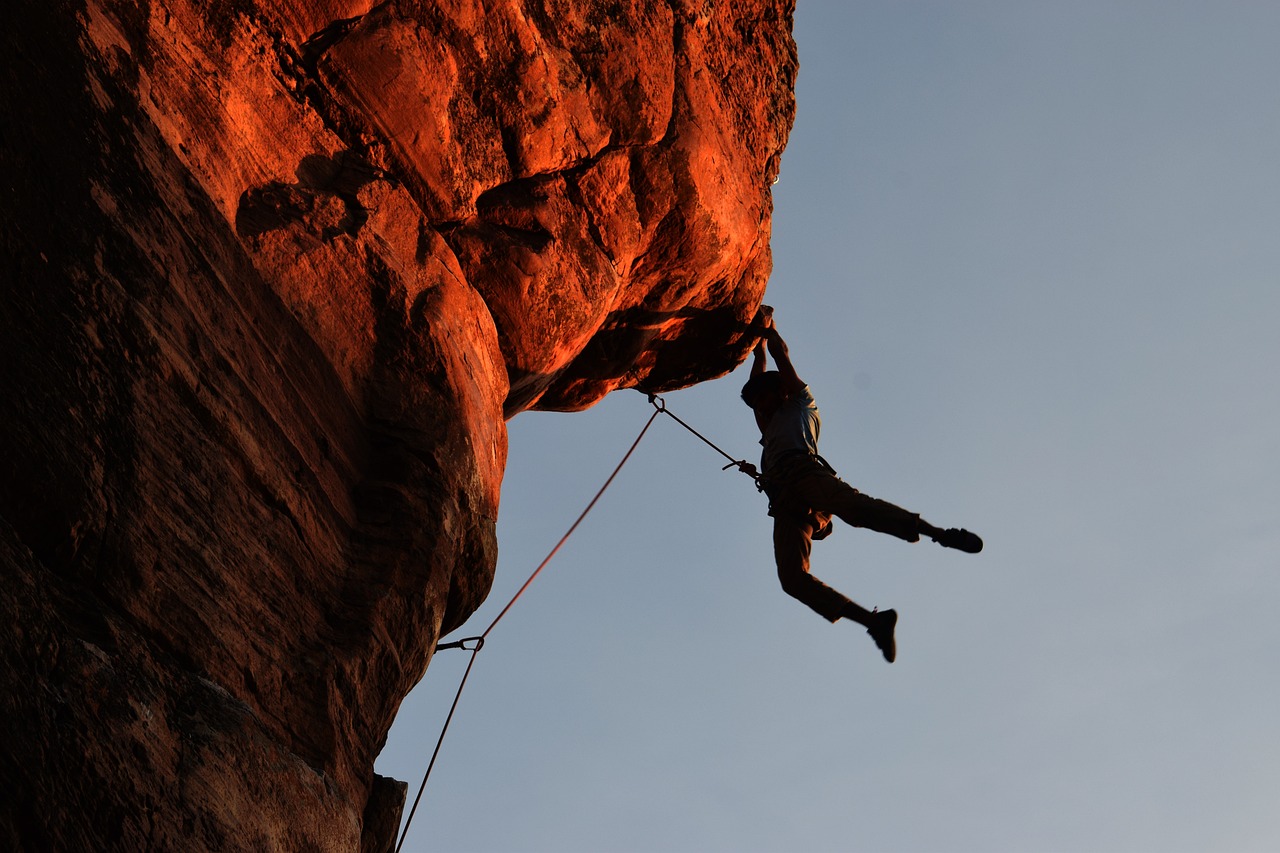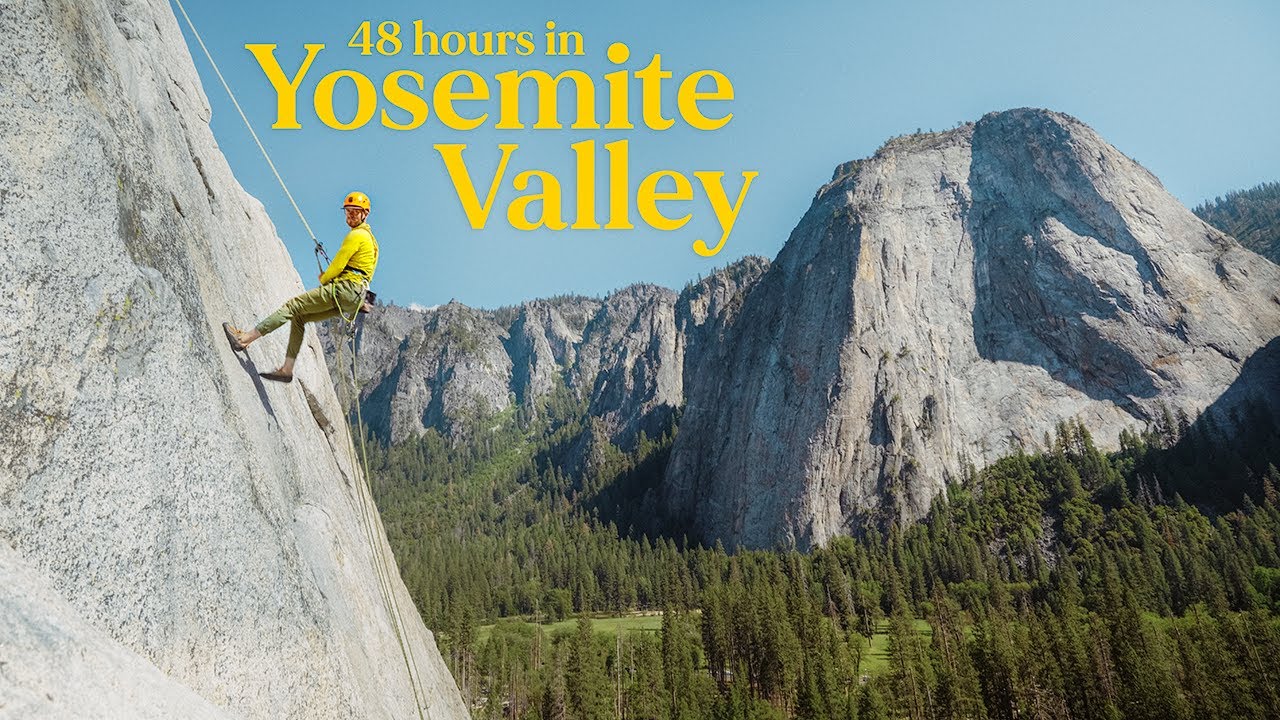Rock Climbing In Yosemite National Park - A Thrilling Adventure
Are you looking for an adrenaline-pumping adventure in the great outdoors? Look no further than rock climbing in Yosemite National Park. Yosemite, located in central California, is a mecca for rock climbers from around the world, offering some of the most challenging and awe-inspiring climbs on the planet.
Author:Jane RestureMar 30, 202314.9K Shares208.2K Views

Are you looking for an adrenaline-pumping adventure in the great outdoors? Look no further than rock climbing in Yosemite National Park. Yosemite, located in central California, is a mecca for rock climbers from around the world, offering some of the most challenging and awe-inspiring climbs on the planet.
Why Yosemite?
There are many reasons why Yosemite is a premier rock climbing destination. First and foremost, the park's granite walls are legendary. Yosemite Valley is home to El Capitan, the world's largest granite monolith, which stands over 3,000 feet tall.
Other famous formations include Half Dome, Sentinel Rock, and Cathedral Peak. These impressive rock faces offer a range of climbing options, from moderate routes to the most difficult free climbs in the world.
Yosemite's rich climbing history is another draw. Legends like Royal Robbins, Warren Harding, and Lynn Hill have all made their mark on the park's walls.
Yosemite's climbing culture is alive and well, with climbers from all over the world coming to test themselves on these storied routes.
Climbing Options
Yosemite offers a wide range of climbing options for all levels of experience. In addition to traditional climbing, the park also offers bouldering and sport climbing.
Bouldering involves climbing shorter, but still challenging, routes without ropes or harnesses. Sport climbing involves using fixed anchors, such as bolts, for protection while climbing.
For those looking for a challenge, Yosemite is home to some of the most difficult climbs in the world. Free climbing El Capitan, for example, requires a combination of technical skill, physical strength, and mental fortitude.
For those just starting out, there are plenty of easier routes to try, such as the popular climbs on Cathedral Peak or Lembert Dome.
Safety Considerations
Rock climbing is an inherently dangerous activity, and Yosemite's sheer granite walls can pose additional challenges. Before heading out on a climb, it's important to be properly trained and equipped.
Climbers should have experience with traditional climbing techniques, including placing gear and building anchors. Proper equipment, including ropes, harnesses, and climbing shoes, is also essential.
In addition, climbers should be prepared for changing weather conditions. Yosemite's high elevation and mountainous terrain can result in sudden temperature drops, thunderstorms, and other weather-related hazards.
It's important to check the weather forecast and bring appropriate gear, such as warm clothing and rain gear, on every climb.
Planning Your Trip
Planning a climbing trip to Yosemite can be overwhelming, especially for first-time visitors. There are a number of resources available to help climbers plan their trip, including guidebooks, online forums, and climbing schools.
Climbing schools are a great option for those new to the sport, as they offer instruction on climbing techniques, equipment use, and safety considerations.
Many schools also offer guided climbs in Yosemite, which can be a great way to experience the park's iconic climbs with the guidance of an experienced climber.

First time Rock Climbing in Yosemite National Park | 48hrs in Yosemite
Tips For A Successful Rock Climbing In Yosemite National Park
Planning a climbing trip to Yosemite National Park can be an exciting and daunting task, especially for first-time visitors. Here are some tips to help ensure a successful and enjoyable climbing trip.
Research And Preparation
Before embarking on a climbing trip to Yosemite, it's essential to do your research and properly prepare. Here are some things to consider:
- Climbing Route Selection- Choosing the right climbing route is crucial for a successful trip. Consider your experience level, preferred type of climbing, and weather conditions when selecting a route. Guidebooks, online forums, and local climbing schools can be helpful resources.
- Equipment and Supplies- Make sure you have all the necessary equipment for your climb, including ropes, harnesses, climbing shoes, helmets, and protection gear. It's also important to bring enough food, water, and clothing for the duration of your trip.
- Permits and Regulations - Climbers need a wilderness permit to climb in Yosemite National Park. Make sure to obtain the necessary permits in advance and familiarize yourself with park regulations, including camping and campfire restrictions.
- Weather Forecast - Yosemite's weather can be unpredictable, so it's important to check the forecast regularly and be prepared for changing weather conditions. Bring appropriate gear for rain, wind, and cold temperatures.
Safety Considerations
Rock climbing is an inherently dangerous activity, and Yosemite's granite walls can pose additional challenges. Here are some safety considerations to keep in mind:
- Proper Training and Experience - Make sure you have proper training and experience before attempting any climbs in Yosemite. This includes knowledge of traditional climbing techniques, equipment use, and emergency procedures.
- Partner and Communication- Climbing with a partner is essential for safety, and good communication is key. Make sure to establish clear communication and climbing signals before starting your climb.
- Risk Assessment- Assessing the risk of a climb is crucial for safety. Consider factors such as weather conditions, route difficulty, and your own physical and mental state before starting a climb.
- Emergency Preparedness- Be prepared for emergencies by carrying a first aid kit, knowing how to perform basic rescue techniques, and having a plan for communication and evacuation in case of an emergency.
Enjoying The Yosemite Climbing Experience
While safety is the top priority, climbing in Yosemite is also about enjoying the experience and taking in the stunning scenery. Here are some tips for making the most of your climbing trip:
- Leave No Trace- Respect the natural environment by following Leave No Trace principles, such as packing out all trash and avoiding damaging vegetation or wildlife.
- Photography - Bring a camera or smartphone to capture the stunning views from your climb. Just be sure to prioritize safety and not let photography distract you from the climb itself.
- Soak it all In - Take breaks to appreciate the natural beauty of Yosemite and the unique experience of climbing on its granite walls. Enjoy the camaraderie of climbing with others and the satisfaction of completing a challenging climb.
Top Climbing Routes In Yosemite National Park
Yosemite National Park is home to some of the most iconic and challenging climbing routes in the world. Here are just a few of the top routes to consider on your next climbing trip:
The Nose On El Capitan
Considered one of the most classic and challenging climbs in Yosemite, The Nose on El Capitan is a 31-pitch climb that requires a combination of technical skill, strength, and mental fortitude.
Snake Dike On Half Dome
A 10-pitch route that winds up the east face of Half Dome, Snake Dike is a favorite among climbers for its unique features and stunning views.
Cathedral Peak
A moderate climb that offers stunning views of Yosemite Valley, Cathedral Peak is a popular option for climbers of all experience levels. The climb consists of 10 pitches and requires a combination of traditional and sports climbing techniques.
Royal Arches
Located in the heart of Yosemite Valley, Royal Arches is a classic climb that winds up a series of granite arches and requires a mix of traditional and sports climbing techniques. The climb is 15 pitches and offers stunning views of Yosemite Valley.
North Face Of The Rostrum
The North Face of the Rostrum is a challenging and technical climb that requires advanced skills in traditional and sport climbing. The climb is 11 pitches and offers stunning views of Yosemite Valley.
Half Dome Regular Route
The Half Dome Regular Route is a challenging climb that requires a combination of traditional and sports climbing techniques. The climb is 23 pitches and offers stunning views of Yosemite Valley and Half Dome.
These are just a few of the many top climbing routes in Yosemite National Park. It's important to remember that these routes require experience, skill, and proper planning. Always prioritize safety and respect for the natural environment when climbing in Yosemite.
People Also Ask
How Do I Train For Rock Climbing In Yosemite National Park?
Training for rock climbing in Yosemite National Park requires a combination of strength, endurance, and technique. Some ways to train include climbing at indoor gyms, practicing on outdoor boulders, weight training, and doing cardio exercises.
What Is The Best Time Of Year To Climb In Yosemite National Park?
The best time of year to climb in Yosemite National Park is typically in the spring and fall when temperatures are cooler and weather conditions are more stable. However, climbing is possible year-round in Yosemite with proper planning and equipment.
Can I Rent Climbing Equipment In Yosemite National Park?
Yes, there are several gear rental shops located near Yosemite National Park that offer a variety of climbing equipment for rent. It's important to make reservations in advance during peak climbing season.
How Do I Find A Climbing Partner In Yosemite National Park?
There are several resources available for finding climbing partners in Yosemite National Park, including online forums, local climbing schools, and networking with other climbers at campsites or climbing areas. It's important to prioritize safety and communication when choosing a climbing partner.
What Is The Best Way To Warm Up Before A Climb In Yosemite National Park?
Warming up before a climb is crucial for preventing injury and performing at your best. Some ways to warm up include stretching, light cardio exercise, and practicing on easier climbs before attempting more challenging routes.
Conclusion
Rock climbing in Yosemite National Park is an adventure like no other. From the awe-inspiring granite walls to the rich climbing history, Yosemite offers something for climbers of all levels.
With proper training, equipment, and planning, a climbing trip to Yosemite can be a thrilling and rewarding experience.

Jane Resture
Author
Since she embarked on her first world trip in 2002, Jane Resture spent the past decades sharing her personal journey and travel tips with people around the world. She has traveled to over 80 countries and territories, where she experienced other cultures, wildlife she had only read about in books, new foods, new people, and new amazing experiences.
Jane believes that travel is for everyone and it helps us learn about ourselves and the world around us. Her goal is to help more people from more backgrounds experience the joy of exploration because she trusts that travel opens the door to the greatest, most unforgettable experiences life can offer and this builds a kinder, more inclusive, more open-minded world.
Latest Articles
Popular Articles